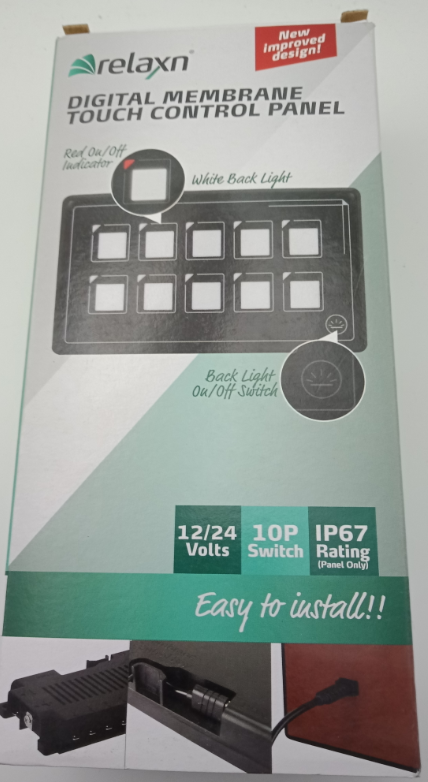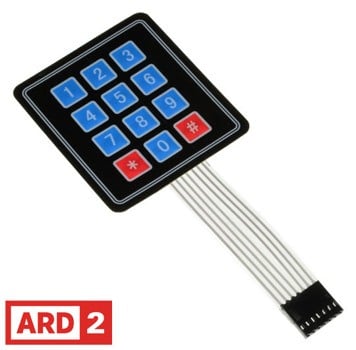Understanding Membrane Switches: The Trick to Sturdy and Trusted Controls
Membrane layer switches over represent a vital aspect of modern-day user interface style, blending capability with strength in various applications. As we discover the intricacies of membrane layer buttons, it comes to be clear that their duty in enhancing control systems is both extensive and complicated, elevating inquiries regarding just how best to leverage their abilities in future technologies.
What Are Membrane Layer Buttons?
Membrane buttons are an innovative service in the world of interface innovation, integrating capability and layout perfectly. These tools function as a user interface in between customers and digital systems, integrating a number of parts right into a small layout. Normally created from flexible, thin layers of products, membrane buttons are developed to reply to touch, allowing users to connect with machinery and digital gadgets efficiently.
The main elements of a membrane layer button include a printed circuit layer, graphic overlay, and a spacer layer that protects against unexpected activation. The visuals overlay can be tailored to reflect brand name identification or user preferences, improving appearances while guaranteeing functionality. Membrane layer switches are frequently used in different applications, consisting of clinical gadgets, consumer electronic devices, and commercial devices, owing to their toughness and resistance to ecological elements such as wetness and dust.
Among the key benefits of membrane buttons is their capability to stand up to wear and tear, making them suitable for high-traffic settings. In addition, they are lightweight and require minimal area, enabling innovative layouts in product development. Generally, membrane switches over represent a functional and reliable selection for contemporary digital user interfaces, weding innovation with user-centric design principles.

Just How Membrane Layer Changes Job
The operation of membrane layer changes joints on a simple yet effective system that equates customer input right into digital signals. When a customer presses the button, the leading layer warps, permitting a conductive aspect in the circuit layer to make contact with an equivalent conductive pad on the underside of the visuals overlay.
The layout of membrane buttons can differ, however they typically include domes or responsive elements to give responses to the customer, enhancing the general experience. The products utilized in membrane switches, such as polyester or polycarbonate, contribute to their durability and resistance to ecological aspects, including dampness and dust. In addition, the published circuits are usually encapsulated, which safeguards them from wear and tear over time.

Benefits of Membrane Layer Buttons
Among the key advantages of membrane buttons is their versatility in layout, permitting them to be personalized to fulfill details customer requirements and visual requirements. This flexibility encompasses different markets, where different forms, dimensions, and shades can be utilized to improve individual communication and aesthetic appeal.
Additionally, membrane switches are recognized for their resilience. Created from durable products, they are immune to dust, moisture, and physical wear, which substantially expands their life expectancy contrasted to traditional mechanical buttons. This durability makes them particularly suitable for high-traffic environments and applications requiring longevity.

In addition, membrane buttons provide a structured profile, leading to a thinner design that can be integrated right into different devices without adding mass. This feature not just enhances the aesthetic charm yet likewise adds to an extra ergonomic item style.

Applications of Membrane Buttons
User-friendly and flexible, membrane layer switches find applications across a vast array of markets, consisting of clinical gadgets, customer electronic devices, and industrial tools. In the clinical area, these switches are integral to gadgets such as analysis tools, patient monitoring systems, and infusion pumps, where reliability and simplicity of cleaning are vital. Their capacity to maintain and hold up against severe atmospheres performance makes them suitable for such applications.
In customer electronic devices, membrane layer switches are used in items like microwaves, cleaning makers, and push-button controls - membrane switch. Their smooth style look at this website permits intuitive interface, enhancing the total user experience while providing sturdiness and resistance to use and tear
Industrial devices additionally profits from membrane switches, specifically in control panels for equipment and automation systems. These buttons provide protection against dust and moisture, guaranteeing consistent efficiency in tough atmospheres. Their adjustable features allow manufacturers to tailor them to specific operational requirements, enhancing effectiveness and performance.
Picking the Right Membrane Layer Switch Over
When choosing a membrane button, it is necessary to take into consideration numerous aspects that influence performance and suitability for details applications. The primary considerations consist of ecological conditions, tactile comments, toughness, and design specs.
First, assess the operating atmosphere; switches exposed to dampness, chemicals, or severe temperatures need certain products to make sure long life and capability. Next off, examine the demand for responsive comments. Relying on individual communication, some applications may profit from a tactile action to confirm activation, while others might like a non-tactile style for visual reasons.
Longevity is another vital variable; membrane switches should be made to hold up against constant use, impacts, and abrasion. Guarantee the selected button can sustain the anticipated lifecycle, especially in high-usage situations.
Verdict
Finally, membrane switches over work as crucial parts in the visit the site layout of sturdy and reliable control systems throughout different markets. Their portable layout, incorporated with robust building and construction and customizable functions, enhances individual communication while making certain durability popular environments. The versatility of membrane layer switches permits customized services that satisfy details operational requirements, enhancing their relevance in contemporary innovation. membrane switch. As markets remain to progress, the relevance of integrating reliable membrane button remedies can not be overstated.
Membrane switches stand for a vital aspect of contemporary interface style, mixing performance with resilience in different applications.Membrane layer buttons are an advanced remedy in the realm of individual interface innovation, integrating capability and design flawlessly. Typically constructed from flexible, slim layers of products, membrane switches are made to respond to touch, allowing customers to engage with machinery and electronic devices successfully.
The design of membrane layer buttons can differ, yet they typically integrate domes or responsive elements to offer comments to the customer, enhancing the total experience.In final thought, membrane layer changes offer as crucial parts in the style of sturdy and reliable control systems throughout various sectors.